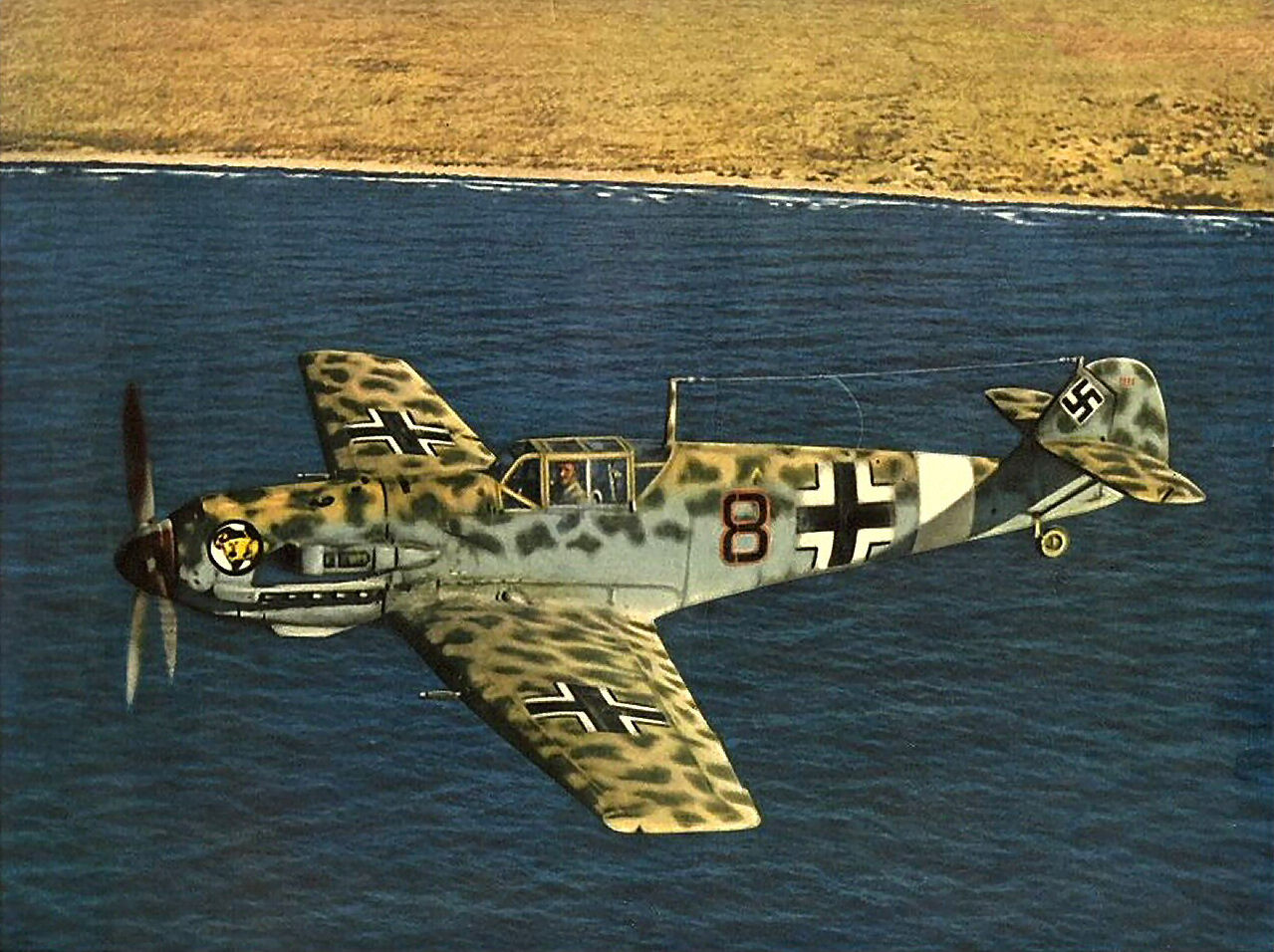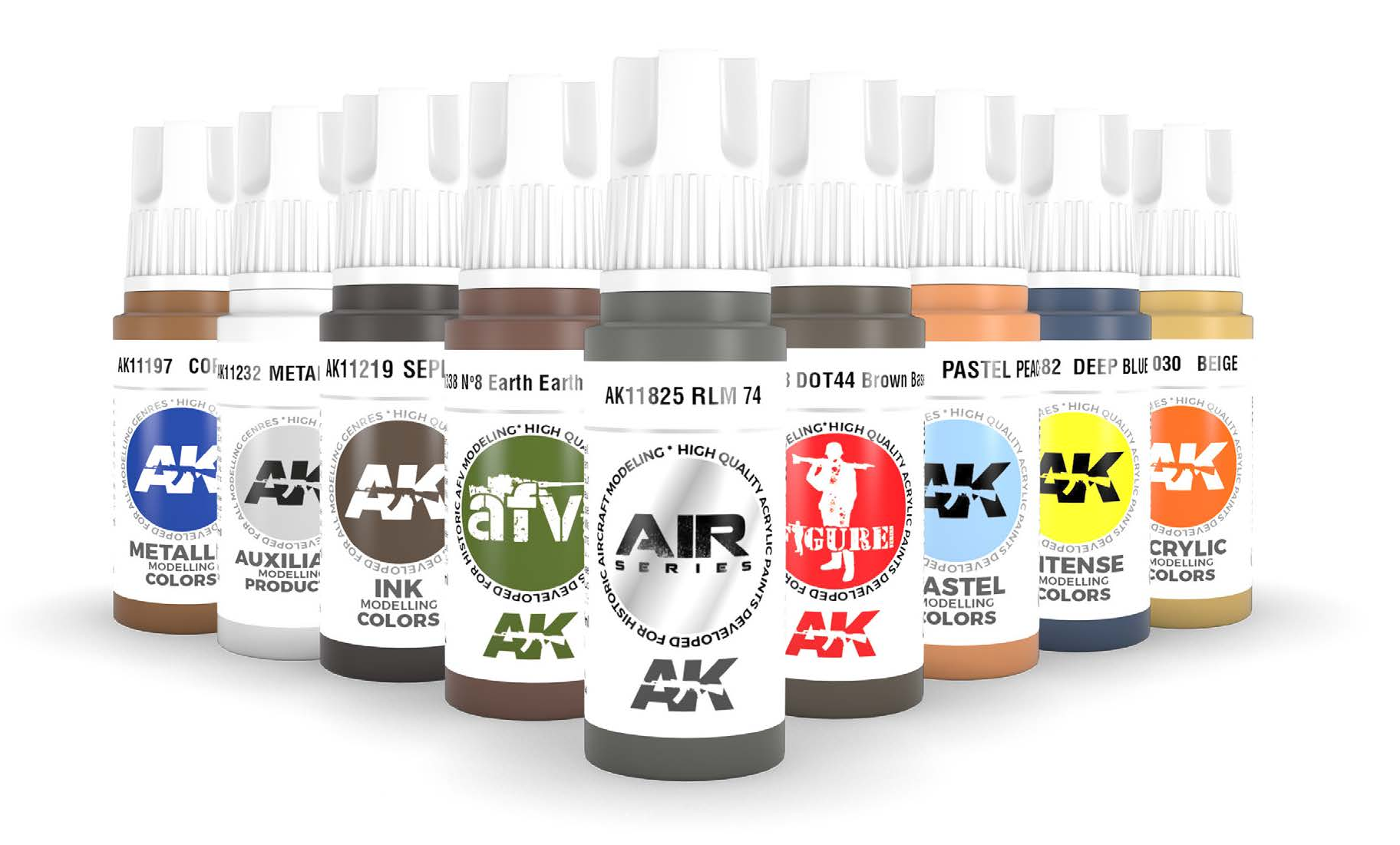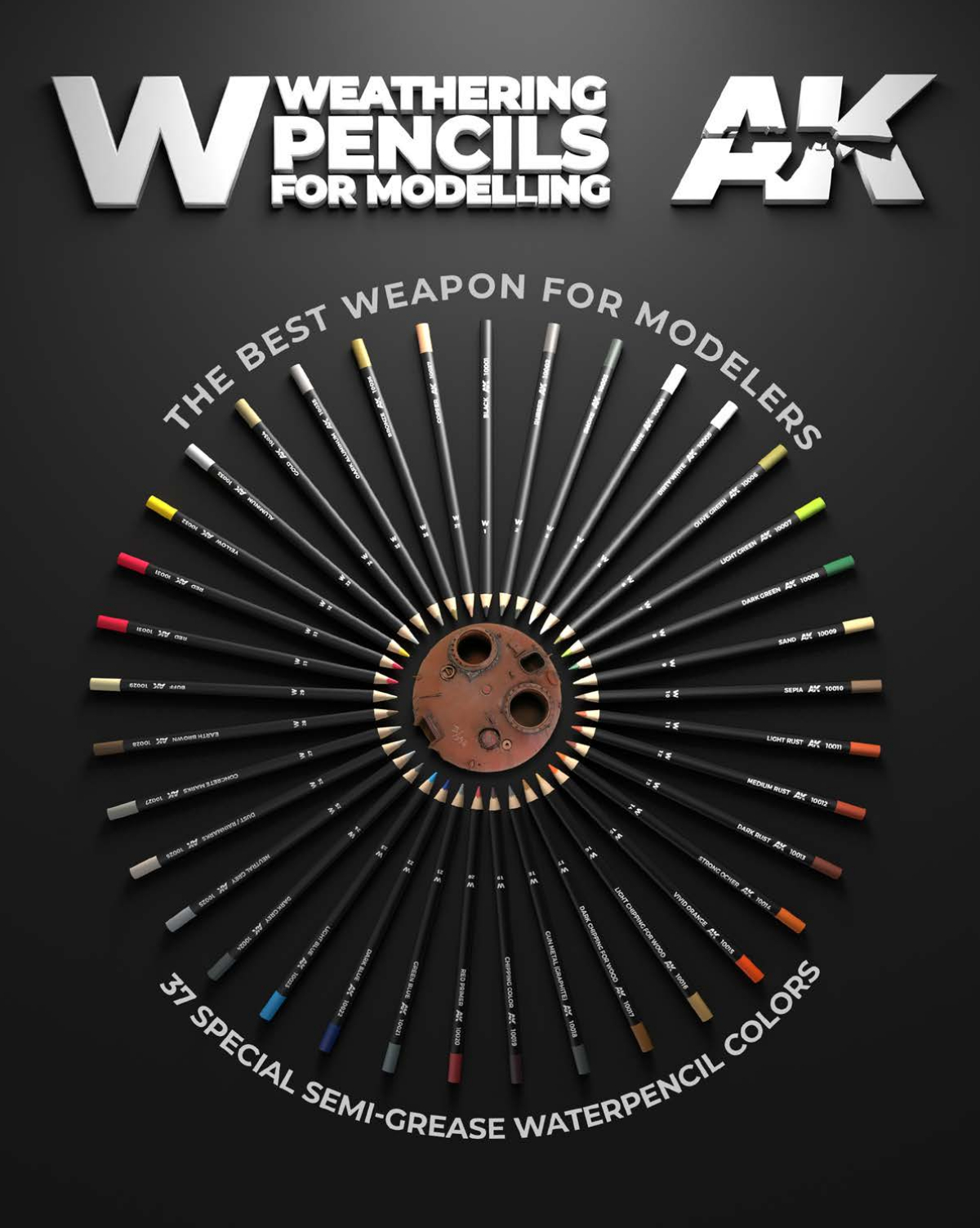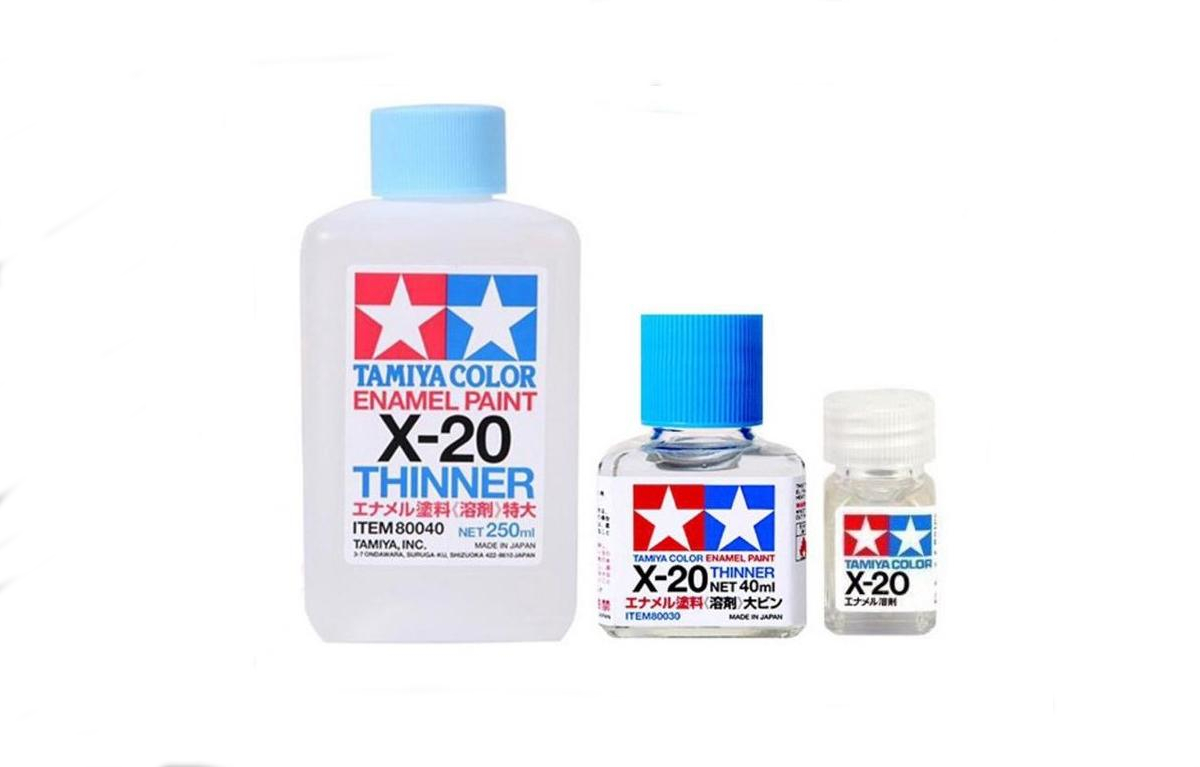TAMIYA ACRYLIC PAINT APPLICATIONS
Vehicles, Equipment, Uniforms, Fabric, Leather, Tools, Ammunition and Camouflage
In the real world, there is always a discrepancy between that of theory and one of practicality. For consistency of colours and uniform applications, various colour standards were created. In theory that is how it worked, however in the real world necessity, supply, field applications, environmental effects, sun fading and operational conditions such as dust, battlefield debris, rain and soil conditions creating a natural filter effect altering the underlying base colour. With TAMIYA Acrylic Paint Applications we have come up with many colour solutions for specific problems.
There are two theories, the first being Historically Accurate Colours, the second Optical Match System, creating colours, hues, shades replicating the actual colours as close as possible for a pleasing historical representation.
For example, the colourful and creative LUFTWAFFE of WW II camouflage schemes used RLM colours, the colour standard created in 1927 by the German Reichs-Ausschuß für Lieferbedingungen und Gütesicherung (Imperial Commission for Delivery Terms and Quality Assurance) a standard of forty colours under the name of “RAL 840”.
By May 1945 there were 140 registered colours in use by WEHRMACHT organizations, HEER, LUFTWAFFE and KRIEGSMARINE.
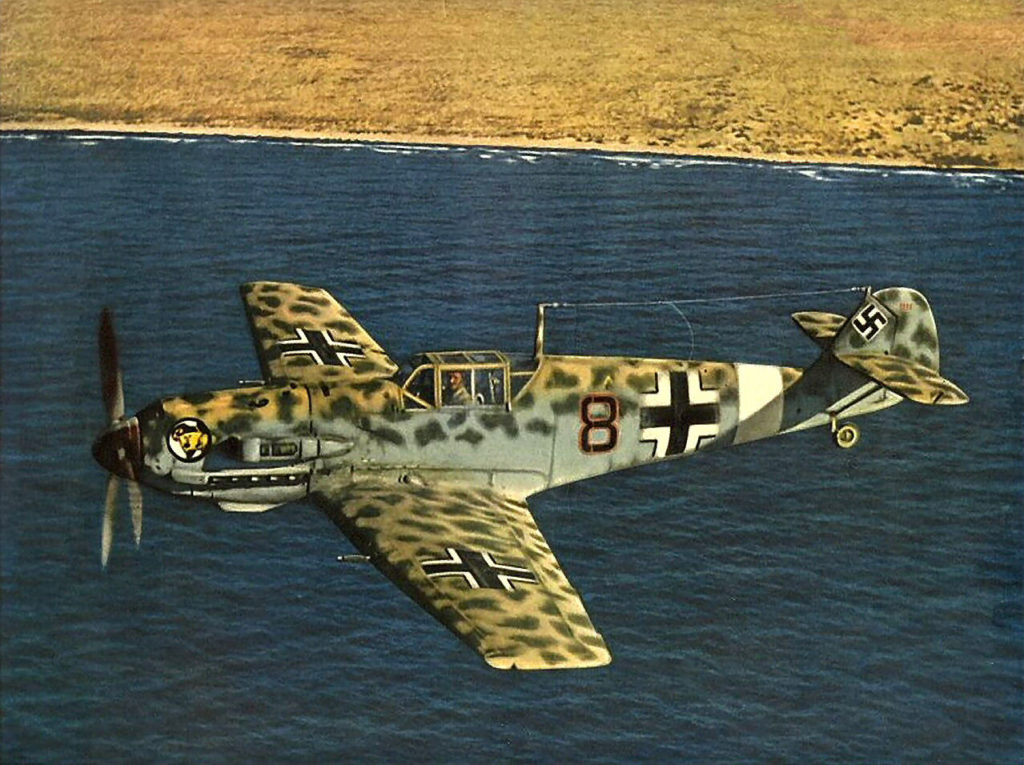
HOW TO PROPERLY USE TAMIYA PAINTS
How to properly use TAMIYA PAINTS is a technique involving a few simple practices. A moment of careful preparation prevents hours of pain fixing a botched paint job on the model you spent hours and hours building and crafting to your liking.
An airbrush is a powerful tool, a joy to work with providing one understands air pressure, flow rate, nozzle distance, airbrush tips such as a Crown Tip, MAC Valve, Pre-set, needle size, double actioning, snapping on and off, holding it properly and most of all, cleaning it. Learning how to use an airbrush from the outset means you can accomplish many techniques and effects impossible with an artist’s brush. Practising bad form using an airbrush will most likely produce continued bad results regardless of how much you practice. We know what we know, right? Learning proper technique and practising the techniques will do wonders for your airbrushing with hours of enjoyment and pleasure. The end result is working with an airbrush is tremendously rewarding producing amazing results.
In the following video on how to use TAMIYA PAINTS properly, you will learn the fundamentals of achieving a great finish. When one encounters problems with acrylic paints we have found it has more to do with technique and viscosity reduction rather than the paint. Remember, do not thin your paint with water and use only the manufacturers recommended thinners, X‑20A and TAMIYA LACQUER THINNER.
Expert modellers recommend using TAMIYA AIRBRUSH CLEANER for the best results. Enjoy the show.
AFV EQUIPMENT & CAMOUFLAGE COLOUR FORMULATIONS
We endeavour to compile a comprehensive colour library of colour pigments using TAMIYA PAINT COLOURS, a high-quality line of paints available in both Acrylic and TAMIYA COLOUR lacquer-based variants, the latter in aerosol cans.
Colour calibrations are defined with drops, an easy and predictable standard of measurement, a colour currency for consistent change, in this case, consistent colour reproduction batch to batch.
Test the colour combinations to determine if the hue, shade or tint is to your liking or representative of the authentic colour you are seeking. Keep in mind environmental conditions such as direct sunlight, angle of sun (morning, midday, late afternoon, evening) shade, varying degrees of overcast cloud cover, fading, intensity or thoroughness of field application, rainfall, dust, dirt and grime accumulation, all act as filters and washes changing the original chroma.
Adding black or white dulls and mutes the colours and should only be used for shading (black) making it darker or tinting (white) making it paler.
To keep the colour intensity alive, use the representative colour to lighten or darken. To keep green alive, to darken it as in a shadow effect add blue (pure blue: X‑4, XF‑8), to make green lighter add yellow (pure yellow: X‑8, XF‑3). A little red (pure red: X‑7, XF‑7) will alter the green changing it towards an olive-green.
In real life looking at an actual vehicle of any type or colour photograph our eyes play tricks on us as there are three things at work direct lighting, indirect lighting and radiosity, the latter where light bouncing around a vehicle will pick up ambient colours from the previous surface adding it to the next.
For example, a new light brown ammunition crate made with freshly cut wood sitting on the back deck near the turret of a T‑34 tank painted with Russian 4BO will pick up a green tinge making it look more like a Khaki Green by the sunlight reflected off the turret.
Looking at the same crate from a different angle will change the colour again. However to our brain, we know what the colour of freshly cut wood looks like from experience, therefore we see freshly cut wood colour when in reality it is more of a Khaki Green colour due to the effect of radiosity. With awareness of a trained eye, one will be able to see the colour differences and distinctions.
RADIOSITY & SCALE EFFECT
Painting our scale models without applying scale effect results in an overly dark, unrealistic colour. With the scale effect applied, we have a realistic representation as if compared side by side, our scale model next to the actual vehicle. It has to do with reflected light off the various surface angles.
Thinking about radiosity and applying different colour intensities and hues as in the case of our wooden crate example we can create a ‘real’ visual experience, creating a new dynamic of authenticity to our model.
Does it need to be a complicated and time-consuming process one may ask? The answer is no.
The use of an appropriate filter colour such as TAMIYA CLEAR COLOURS or a wash altering the chroma will suffice for that one specific radiosity illuminated surface, not the entire crate. For the remaining vertical and horizontal crate, surfaces use shading, a gradient or blending effect will work perfectly. The result will be a convincing realistic effect.
TAMIYA COLOUR and CAMOUFLAGE APPLICATIONS
TESTED TAMIYA PAINT MIXES
TANKS
WWI British Tank Service Brown Colour
The TAMIYA Mix produces a brown/khaki colour closely resembling the hues of original equipment during WWI. Given the original Service Brown Colour formulation contains, white, burnt turkey (burnt ochre‽), lamp post black (not a true black) and raw linseed oil (yellowish to yellow-brown; medium maple syrup colour) by weight, batch results could vary from one to the next. Perhaps the benchmark for consistency was the calibration standard of “it’s close enough”.
XF-68 NATO Brown: 5
XF‑3 Flat Yellow: 4
XF-69 NATO Black: 1
WWI British Landship Brown
Mk.1 to Mk.IV Tank Body Plate and Sponsons
XF-52 Flat Earth: 5
XF-55 Deck Tan: 5
X‑10 Gun Metal
X‑11 Chrome Silver
X‑12 Gold Leaf
XF-57 Buff
XF‑2 Flat White
XF-64 Red Brown
XF‑7 Flat Red
XF-84 Dark Iron
Soviet Russia 4B0 Green
XF-73 Dark Green (JSDF): 6
XF‑4 Yellow Green: 4
XF-49 Khak: 3
XF-27 Black Green: 1 (deeper green)
XF-17 Sea Blue; Shading; drop by drop for desired colour contrast
XF‑4 Yellow Green: Highlights to lighten; drop by drop for desired colour contrast
Soviet Russia Protective Green
XF‑4 Yellow Green: 5
XF-58 Olive Green: 5
Soviet Russia Light Sand or 4BG
XF-59 Desert Yellow: 5
XF-62 Olive Drab: 5
Adjust colour drop by drop for the colour dominance shift for the desired hue.
Soviet Green Post War
XF-67 NATO GREEN
Desert Pink
Believed to be in use to end of the North African Campaign in May 1943, when it was replaced by Light Mud
XF‑2 Flat White: 5
XF-15 Flat Flesh: 5
XF-52 Flat Earth: 1
Light Mud
XF-55 Deck Tan: 4 (increase by 1 for more hue intensity)
XF-49 Khaki: 2
XF-66 Light Gray: 1
British SCC 15
Option 1
XF-61 Dark Green: 5
XF-62 Olive Drab: 2
XF‑3 Flat Yellow: 2
Option 2
XF-81 Dark Green 2 RAF: 5
XF-58 Olive Green: 1
XF‑7 Flat Red: 11
XF-49 Khaki Seats, bags, etc.
XF-52 Flat Earth British and Italian tanks
XF-57 Buff Camouflage on U.S. tanks
XF-58 Olive green U.S. tanks
XF-59 Desert yellow British tanks seen in the desert
XF-60 Dark yellow German tanks
XF-61 Dark green British or Russian tanks & camouflage German tanks
XF-62 Olive drab U.S. tanks or other modern tanks
XF-63 German grey German tanks
XF-64 Red brown German and British tanks
XF-66 Light grey Interior of tanks
FIGURES
XF‑1 Flat black German tank crews
XF-49 Khaki Japanese Army infantry on the Southern Border
XF-50 Field blue Russian Air Force crew
XF-51 Khaki drab U.S. and Russian Army infantry
XF-58 Olive green U.S. Army infantry
XF-59 Desert yellow British Army infantry in Africa
XF-60 Dark yellow German Africa Corps
XF-65 Field Grey German Army
XF-10 Flat brown Hair, leather and wood part of guns
XF-15 Flat flesh Face
XF-57 Buff Bags, etc.
JAPANESE AIRCRAFT
XF-11 JN green Upper side of the Navy plane
XF-12 JN grey Lower side of the Navy plane
XF-13 JA green Upper side of the Army plane
XF-14 JA grey Lower side of the Army plane
XF-16 Flat aluminum Silver fuselage without colouring
X‑13 Metallic blue Interior of the plane
U.S. AIRCRAFT
XF‑2 Flat white Lower side of the Navy plane
XF‑4 Yellow Green Interior of the plane
XF-16 Flat aluminum Silver fuselage without colouring
XF-17 Sea blue Camouflage on Navy plane
XF-18 Medium blue Camouflage on Navy plane
XF-19 Sky grey Overall painting of Navy plane
XF-53 Neutral grey Lower side of Army plane
XF-62 Olive drab Upperside of Army plane
BRITISH AIRCRAFT
XF-20 Medium grey Lower side of the plane
XF-21 Sky Lower side of the plane
XF-53 Neutral Grey Camouflage
XF-60 Dark yellow Camouflage
XF-61 Dark Green Camouflage
XF-64 Red Brown Camouflage
SHIPS
XF‑9 Hull red Bottom of the hull
XF-25 Light sea grey Hull of British ships
XF-53 Neutral grey Light hull colouring
XF-54 Dark sea grey Dark hull colouring
XF-55 Deck tan Wooden deck
XF-64 Red brown Linoleum decking
GERMAN AIRCRAFT
XF-22 RLM grey Interior of the plane
XF-23 Light blue Lower side of the plane
XF-24 Dark Grey Camouflage
XF-25 Light sea grey Camouflage
XF-26 Deep green Camouflage
XF-27 Black Green Camouflage
FS Colours – Aircraft
FS 30219 SEA Tan United States Military
To one pot of XF-59 (10ML) add 50 drops of XF-52 and 20 drops of XF-68.
FS 34092 Euro I Dark Green Military: United States
To one pot of XF-26 (10ML) add 105 drops of XF-24 and 10 drops of XF‑8.
OR
XF-11 – J.N. GREEN: 3
XF-58 – OLIVE GREEN: 2
FS 36081 Euro I Gray
Aircraft: United States From: Model Art 236 – (F‑15)
XF-24 – DARK GREY: 9
XF‑1 – FLAT BLACK: 8
XF‑3 – FLAT YELLOW: 3
FS 34102 Medium Green
Military: United States
To one pot of XF-67 add 45 drops of XF‑3 yellow.
OR
XF-62 – OLIVE DRAB: 1
X4 – BLUE: 1
FS 35622 Israeli blue/Duck Egg Blue
Military: United States
To one 10Ml pot of flat white, add 15 drops of X‑23 clear blue and 6 drops of X‑25
clear green
FS 35450 Air Superiority Blue
Aircraft: United States
XF‑2 – FLAT WHITE: 85
X3 – ROYAL BLUE: 9
XF‑1 – FLAT BLACK: 5
XF‑9 – HULL RED: 1
FS 36231 Dark Gull Gray
Aircraft: United States
XF-24 – DARK GREY:11
XF-20 – MEDIUM GREY: 9
FS 36440 Light Gull Grey
Aircraft: United States From: Tamiya Kit 61034: F4F Wildcat FS36440, ANA 620, or BS495.
Used on lower surfaces of all USN/USMC aircraft 1940-
1942. Ref: Official Monogram US Navy & Marine Corps Aircraft Colour Guide.
XF-19 – SKY GREY: 2 XF‑2 – FLAT WHITE: 1
FS 36320 Dark Ghost Gray
Aircraft: United States
XF-66 – LIGHT GREY: 11
XF‑2 – FLAT WHITE: 7
XF-24 – DARK GREY: 2
FS 36375 Light Ghost Gray
Aircraft: United States
XF‑2 – FLAT WHITE: 15
XF-24 – DARK GREY: 3
XF-66 – LIGHT GREY: 2
FS 30109 Roundel Red
Aircraft: United Kingdom From: Spitfire Vb
colour used in British insignias from 1941 to 1946
XF‑7 – FLAT RED: 10
XF‑9 – HULL RED: 1
FS 35189 Non-Specular Blue-Grey
FS35189 or BS (British Standard) 485 used on upper surfaces of USN/USMC aircraft from 1941–1942. Ref: Official Monogram US Navy & Marine Corps Aircraft Colour Guide.
XF-18 MEDIUM BLUE: 3
XF‑2 – FLAT WHITE: 1
F‑15 Avionics Bay
Aircraft: United States
XF-16 – FLAT ALUMINUM: 5
X23 – CLEAR BLUE: 3
X24 – CLEAR YELLOW: 2
RLM – Luftwaffe colours
RLM 02
XF-22 – RLM GREY: 1
XF-49 – KHAKI: 1
XF‑2 – FLAT WHITE: 1
RLM 02 – Grau
XF-22 – RLM GREY: 60
XF-52 – FLAT EARTH: 30
XF‑2 – FLAT WHITE: 10
RLM 70 – Schwarzgrun
XF-11 – J.N. GREEN: 90
XF‑1 – FLAT BLACK: 10
RLM 71 – Dunkelgrun
XF-11 – J.N. GREEN: 70
XF-60 – DARK YELLOW: 25
XF-10 – FLAT BROWN: 5
RLM 74
XF‑2 – FLAT WHITE: 2
XF-24 – DARK GREY: 2
XF-27 – BLACK GREEN: 1
RLM 75
XF‑2 – FLAT WHITE: 15
XF-24 – DARK GREY: 5
X27 – CLEAR RED: 1
RLM 76
XF‑2 – FLAT WHITE: 19
XF-19 – SKY GREY: 6
XF-23 – LIGHT BLUE: 3
X23 – CLEAR BLUE: 1
RLM 76 – Lichtblau
XF-19 – SKY GREY: 55
XF-23 – LIGHT BLUE: 30
XF‑2 – FLAT WHITE: 15
RLM 81 Braun-Violett
XF-61 – DARK GREEN: 7
XF-64 – RED BROWN: 3
XF‑2 – FLAT WHITE: 1
RLM 82 Hellgrun
XF-26 – DEEP GREEN: 8
XF-61 – DARK GREEN: 1
XF‑2 – FLAT WHITE: 1
RLM 82 Hellgrun
XF-26 – DEEP GREEN: 8
XF-61 – DARK GREEN: 1
WWII Allied Aircraft Colours
Azure
Aircraft: United Kingdom
XF-16 FLAT ALUMINUM: 2
XF‑2 FLAT WHITE: 10
XF-18 MEDIUM BLUE
WWII French Light Blue-Gray
Aircraft: France
XF‑2 – FLAT WHITE: 1
XF-25 – LIGHT SEA GREY: 2
OR
Aircraft: France
XF-18 MEDIUM BLUE: 1
XF-53 – NEUTRAL GREY: 2
XF‑2 – FLAT WHITE: 1
WWII French: French Kaki (Khaki)
Aircraft: France
XF-26 – DEEP GREEN:
OR
XF‑5 – FLAT GREEN: 1
XF-49 – KHAKI: 1
WWII French Interior
Aircraft: France
XF-18 MEDIUM BLUE: 1
Dark Earth
Aircraft: United Kingdom
XF-52 – FLAT EARTH: 1
XF-64 – RED BROWN: 1
Dark Green
Aircraft: United Kingdom
XF-58 – OLIVE GREEN: 1
XF-62 – OLIVE DRAB: 5
Fuel Tank Red
Aircraft: United Kingdom
XF‑7 – FLAT RED: 5
XF‑9 – HULL RED: 1
Interior Green (Navy)
Aircraft: United States
XF‑3 – FLAT YELLOW: 1
XF‑5 – FLAT GREEN: 1
Japanese interior green
Aircraft: Japan
XF‑3 – FLAT YELLOW: 1
XF-21 – SKY: 1
XF-58 – OLIVE GREEN: 1
Mediterranean Dk Sea Blue
Aircraft: United Kingdom
X3 – ROYAL BLUE: 10
XF‑2 – FLAT WHITE: 1
X21 – FLAT BASE: 2
XF-19 – SKY GREY: 1
Mediterranean Lt Sea Blue
Aircraft: United Kingdom
XF-18 MEDIUM BLUE: 10
XF‑2 – FLAT WHITE: 1
Middle Stone
Aircraft: United Kingdom
XF-59 – DESERT YELLOW: 1
XF-60 – DARK YELLOW: 1
Non-Specular Blue-Grey
Aircraft: United States
FS35189 or BS(British Standard)485 used on upper surfaces of USN/USMC aircraft
from 1941–1942. Ref: Official Monogram US Navy & Marine Corps Aircraft colour.
XF-18 MEDIUM BLUE: 3
XF‑2 – FLAT WHITE: 1
Non-Specular Sea Blue
Aircraft: United States
FS 35042 (Non-Specular Sea Blue) is, of course, the colour of the top fuselage
surfaces of USN aircraft after 1942.
XF-17 (Sea Blue) is a pretty good approximation of this colour, but to my eye, it looks
a little too green, and maybe a little too dark.
XF-17 : 6
XF‑8 : 6
XF-53 : 1 (Maybe as much as 2 parts, but certainly no more)
Further to this, the same colour, albeit in a glossy finish, (Glossy Sea Blue, FS15042)
was used as the overall colour of USN aircraft after 1943. I believe that the same finish
could be achieved by using the above mix, and clear-coating afterwards.
XF-17 – SEA BLUE: 6
XF‑8 – FLAT BLUE: 6
XF-53 – NEUTRAL GREY: 1
Cockpit colour (Nakajima)
XF-62 – OLIVE DRAB: 3
XF‑4 – YELLOW GREEN: 1
Spitfire interior
Military: United Kingdom
XF‑5 – FLAT GREEN: 1
XF-21 – SKY: 3
XF-65 – FIELD GREY: 1
Zinc Chromate
Aircraft: United States
Approximate FS33481
XF‑3 – FLAT YELLOW: 2
XF‑5 – FLAT GREEN: 1
Weathering Mixes
Burnt steel
X11 – CHROME SILVER: 4
X12 – GOLD LEAF: 4
XF-64 – RED BROWN: 2
Brake Dust
XF‑1 – FLAT BLACK: 4
XF‑7 – FLAT RED: 5
X21 – FLAT BASE: 1
Cordite Stain
XF‑2 – FLAT WHITE: 6
XF-63 – GERMAN GREY: 2
X21 – FLAT BASE: 1
Fresh Blood
X27 – CLEAR RED: 8
X25 – CLEAR GREEN: 1
X7 – RED: 1
Normandy Dust
XF-52 – FLAT EARTH: 5
XF‑2 – FLAT WHITE: 3
XF-64 – RED BROWN: 2
Petrol Stain
X22 – CLEAR: 6
X24 – CLEAR YELLOW: 2
X19 – SMOKE: 2
Road Dirt
XF-52 – FLAT EARTH: 6
XF‑1 – FLAT BLACK: 3
X21 – FLAT BASE: 1
Tank Track Colour
XF-64 – RED BROWN: 5
XF‑2 – FLAT WHITE: 3
XF-52 – FLAT EARTH: 1
X21 – FLAT BASE: 1
Tire Black
XF‑1 – FLAT BLACK: 1
XF-63 – GERMAN GREY: 1
XF-64 – RED BROWN: 1
X21 – FLAT BASE: 1
Vietnam Red Dust
XF-52 – FLAT EARTH: 5
XF‑7 – FLAT RED: 4
X21 – FLAT BASE: 1
Various Military Colours
Canvas
General: United States From:
XF-49 – KHAKI: 1
XF-65 – FIELD GREY: 1
Olive Drab
Military: United States
World War II US Army Olive Drab. Scale effect for 1/35th scale.
XF-51 – KHAKI DRAB: 45
XF-62 – OLIVE DRAB: 45
XF‑2 – FLAT WHITE: 10
Periscope Green
Paint Periscope first with Flat aluminum, then give three coats of the following mix,
allowing time to dry for each coat:
X23 – CLEAR BLUE: 1
X25 – CLEAR GREEN: 2
Soviet Olive Green (Modern)
Military: Russia From: Custom Mix
XF-58 – OLIVE GREEN: 10
XF‑2 – FLAT WHITE: 2
XF‑3 – FLAT YELLOW: 1
Armour Interior Green
From: Tamiya M2 Bradley
XF‑5 – FLAT GREEN: 4
XF‑2 – FLAT WHITE: 1
MERDEC Colours – US Army Camo from the 1980s
MERDC Brown
Military: United States
XF‑2 – FLAT WHITE: 1
XF-64 – RED BROWN: 1
MERDC Dark Green
Military: United States
XF‑5 – FLAT GREEN: 1
XF-11 – J.N. GREEN: 1
MERDC Forest Green
Military: United States
XF‑5 – FLAT GREEN: 1
XF-13 – J.A. GREEN: 1
MERDC Light Sand
Military: United States
XF‑2 – FLAT WHITE: 1
XF-57 – BUFF: 1
MERDC Loam Green
Military: United States
XF‑5 – FLAT GREEN: 1
XF-57 – BUFF: 3
MERDC Pale Brown
Military: United States
XF-52 – FLAT EARTH: 1
XF-57 – BUFF: 8
MERDC Pale Green
Military: United States
XF-65 – FIELD GREY: 1
MERDC Sand
Military: United States
XF‑2 – FLAT WHITE: 1
XF-57 – BUFF: 1

